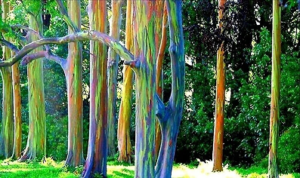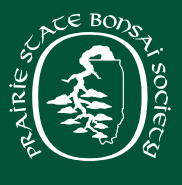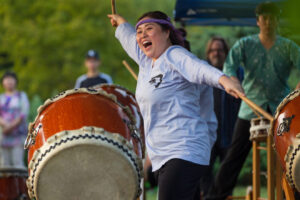Depending on when you are reading this, repotting season is just starting or is in full swing. The choice of which bonsai soil to use is an often hotly debated topic. This article is not meant to solve the question of what is the “best” bonsai soil/substrate, but rather meant to give newcomers to the hobby a basic understanding of the different options available and to partially explain why there are so many choices. The first thing to consider when choosing a bonsai soil is what species you are working with and what are you trying to accomplish with that particular tree. Tree species have different moisture and oxygen requirements and the substrates and size of the particles can help you reach those needs along with how often you are able to water a particular tree during the day. To meet these needs, we usually use “soil” that is made up of rocks and clay particles. These minerals will hold the water vapor that your tree absorbs, since plants do not drink water as you do. The small air pockets between the rocks hold airpockets that your plant needs. In bonsai we use small pots to house our trees. The small pots limit the amount of space for roots, so we need to maximize the amount of roots we have in the pot and encourage our plants to grow fine feeder roots and we do not need our plants to have the larger tap roots that hold a plant firm in the ground as we wire our plants into the pots. Lastly, since bonsai pots are small to help shrink foliage size, a soil that does not break down quickly helps to decrease repotting frequencies and helps maintain the dense amount of fine roots we want to provide nutrients and water vapor to our tree.The different substrates we use for bonsai soil helps us meet these goals. Materials like lava rock and pumice have large surface areas to hold moisture, do not decompose quickly, only hold moisture on their surface, and can only hold a limited amount of fertilizer/salts. Materials like clay, compost, and bark can both hold more moisture and fertilizer/salts on their surface and internally to be slowly released. Turface is a manmade, fired clay that holds water well. Akadama is clay that was fired by volcanic eruptions a long time ago that holds water, helps root development, and has a high ion exchange capacity that help bind fertilizer to it. Other materials like pine bark, sand, granite, and others have been used over the years as well to various success. For the midwest region most hobbyists use a 1:1:1 mixture of one part pumice to one part lava rock to either one part akadama or turface, or a slight modification of this mixture.
The amount of moisture and fertilizer that we need for our trees depends on the stage they are at, type of plant, time of year, health of the plant… all of these factors are why watering can be so dificult for us. In general, deciduous trees have higher water mobility, meaning that they will need more water in the soil as the capillary movement increases due to the large amount of evaporation of moisture from the foliage. (Up to 75% of the moisture a tree takes in will be evaporated from the foliage as the tree attempts to cool itself.) Conifers and junipers have small, wax covered needle-like foliage that limits the amount of evaporation from the foliage, which greatly reduces the amount of moisture the tree needs. Trees that you are simply growing out (early stage, trying to get larger trunk, branches, more foliage..) have a high demand for moisture and fertilizer and can be grown in the ground or in pots with large amounts of organic matter. Think of these plants as tenagers growing a 6’ to a foot in a year and can eat a whole pizza for dinner and stay skinny and healthy. On the other extreme, we have a show tree that we have trained to look old, that has been pruned to limited foliage and we want to limit growth. This type of tree needs less organic material and more pumice or lava rock because it does not need as much moisture and fertilizer retention because we are just try to maintain its current shape or grow the tree in small amounts. Think of this tree as the 45 year old or older person that should only be eatting only one slice of pizza and a light beer or will have all kinds of complications.
If this already sounds like more than you ever wanted to know about soil, then there is an easy option. Many bonsai supply companies will be more than happy to sell you a premixed soil for you to use. BC Bonsai sells a mix that has turface, lava rock, and pine bark that is a good all around mix for beginners. You may also find mixes online and specialty retailers. For those of you want to maximize your trees you will need to either modify these mixes or make your own. Talk to members in your local community or club to see what works best for your area and where they buy supplies. Substrate material can also be purchased on line. Once you have purchased the substrate, you will need to screen the material to separate to clean out dust and fine material and separate the substrate into the various sizes you will need. Shifting screens can be purchase online, from BC Bonsai, or can be made. A good general mix is 1 part akadama, 1 part pumice and 1 part lava rock. Larger particle size for conifers and junipers and smaller for most deciduous. Some people even go 100% akadama for maples and other high moisture mobility trees. See what works for you and what your budget can afford.




Screen Material


Above are samples of a purchased screen on the left and a home made using wire mesh purchased at Menards and scrap lumber.
Substrate needs to be screened to separate by size and remove dust and fine particles. I have found that a large bucket or a black mixing tub (also purchased at Menards for @$8 can can be used to keep area clean while reporting) works well. Start screening using the large opening screen, usually ¼” size. Smaller material will fall in the as shown in the image. Store the material that is left in the screen in a container marked ¼”. This material is great for pines, junipers and material that needs better drainage and likes things a little drier. Next use your smallest diameter screen to screen the material that had fallen through the previous screen. The material left in the screen goes in another container and this will be used in mixes for deciduous and trees that require more moisture retention. The material that has fallen through the screen should be very fine and dust now. This material can be used for muck or I save it to add in a tray that I grow moss in. (More on growing moss in a future article.)

Two, two year old maple seedlings. The one on the left was grown in Bonsail soil and the one on the right was in comercial potting soil.



